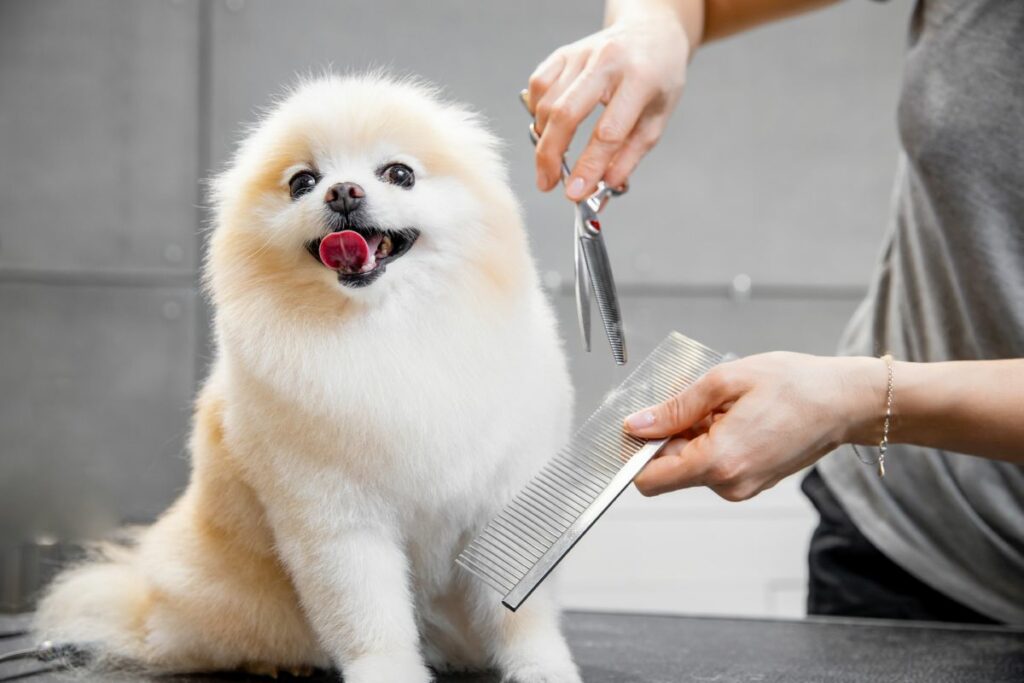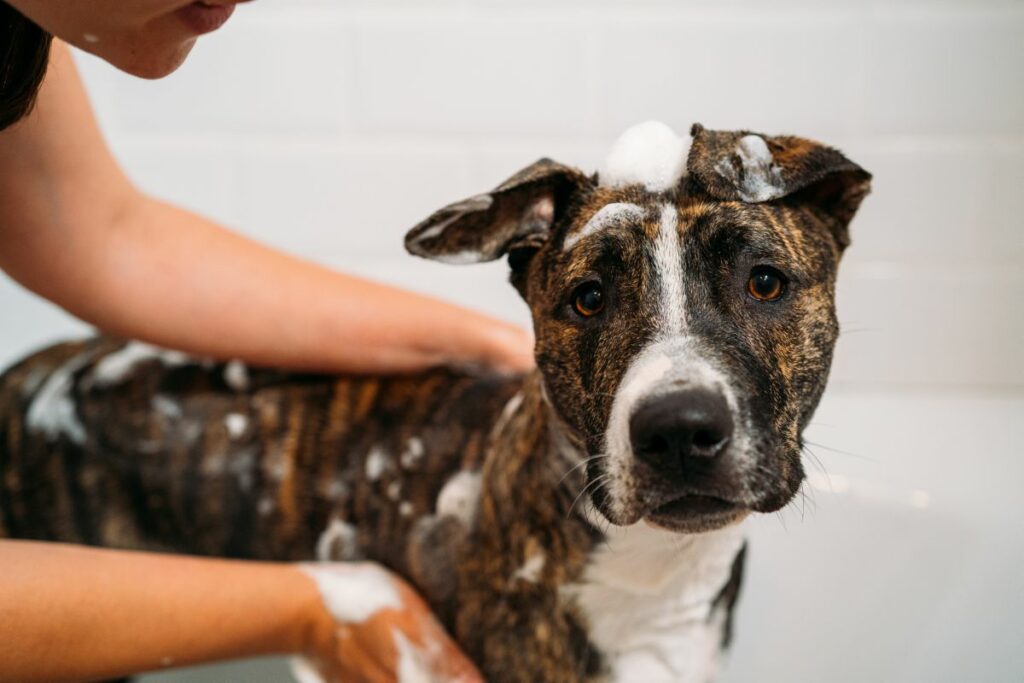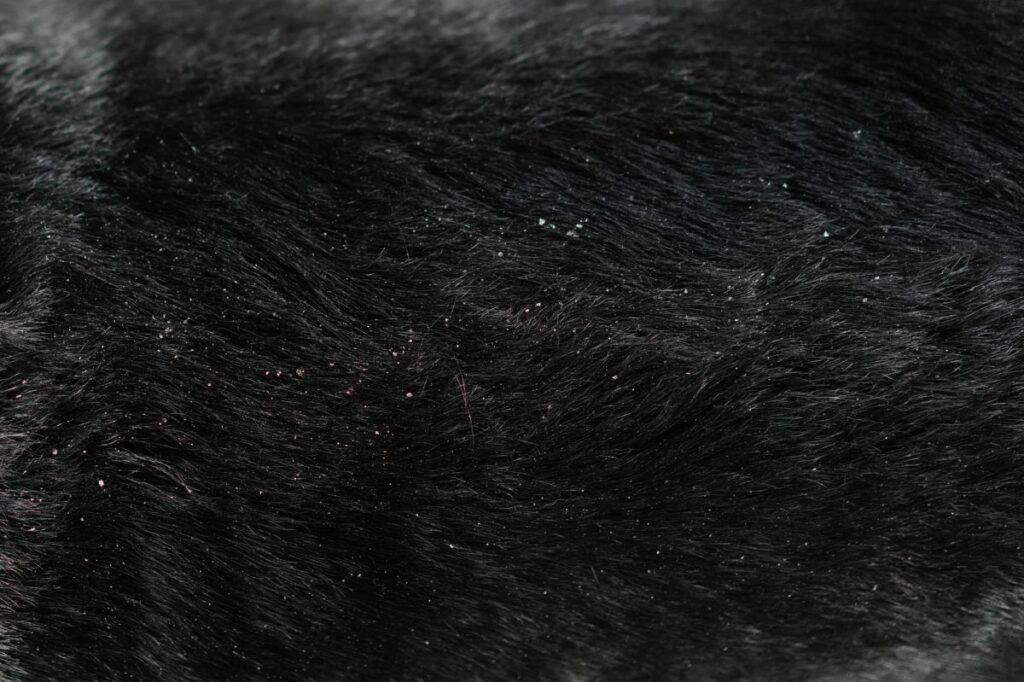Have you ever noticed your dog leaving small white lakes all over the place? In case you are wondering what that can be, we have the most likely answer: dog dandruff! As happens with humans, dogs are also prompt to have dandruff and, when they do, it can be a sign of something that needs to be addressed in regards to your furry friend’s wellbeing.
Fortunately, in most cases, it is just something normal that does not represent a high risk for your dog. Nevertheless, it is an issue that you should be aware of. And you can! There are many different ways to get rid of dog dandruff. Do you want to get to know how you can free your canine buddy from these white sprinkles? Read along to find out more about it!
Why do dogs get dandruff?
Dandruff shows up in dogs when their sebaceous glands produce an excess of sebum, an oil that helps to protect the dog’s skin. When the dog produced too much sebum, this imbalance results in dandruff. Furthermore, as happens with humans who have dandruff, the imbalance in the sebum production can be caused by several factors. Some of the most common causes are:
- An unhealthy diet: not having the proper nutrients can have negative consequences for the dog’s skin
- Allergies: seasonal changes or environmental factors can result in allergies, and the production of sebum is altered, giving way to dandruff.
- Infections caused by bacteria: when the dog’s immune system is compromised by the presence of fungi or bacteria, sebum production can also be affected.
- Grooming habits: bathing your dog more than it really needs to can also alter the sebum production. Thus, it is very important that you are aware of what are the recommended grooming habits for your dog. This varies depending on the breed, as some dogs require more frequent grooming than others.
- Stress: this is always a factor that can affect several body functions, and sebum production is one of them.
How can you tell if your dog has dandruff issues?
As you may probably know, the most common and visible symptom of dandruff is the white flakes that are spread all over the place and on your dog’s skin. When looking at your dog’s coat, dandruff can be very easily spotted in several cases. This is especially true when it comes to dogs with dark furs. It can be a bit more tricky to notice dandruff in white or golden dogs. Despite this, the dandruff is also spread through the spaces where the dog is in, so you may encounter white flakes on the floor, the couch, or the blankets.
Another symptom that can indicate a dandruff issue is itchiness. If your dog is scratching itself more than it usually does, this can also be an indicator of dandruff. However, itchiness can also be caused by other things, so it is always best to consult your vet if you see that your dog is presenting itchiness.
Finally, when there is a skin infection, another thing that can indicate dandruff is red skin or a strong odor. Therefore, keeping an eye on your dog’s skin is always very important, especially when you also notice other symptoms such as itchiness.

How to get rid of dog dandruff?
Now that you know a bit more about the causes of dog dandruff, we are going to tell you how you can get rid of it. Addressing the issue of dandruff efficiently and in good time is key to ensuring your dog’s wellbeing. Even though, as we have explained, dandruff is not a serious issue most of the time, it is still essential to take action towards it.
1. Medication
When the reason behind the dandruff is likely to be an allergy or an infection, one of the best ways to get rid of it is to give medication to your furry friend. It is essential that you always do this with the advice and guidance of your vet. Depending on what may be causing dandruff, and also on your dog’s breed, size, and age, the type of medication or the amount of medication that your dog will need can be different, and the only person who can tell you this is your vet.
2. Proper grooming habits
Following a good grooming routine that is apt for your dog is essential to prevent and get rid of dandruff. As we explained above, on many occasions dandruff is a result of improper grooming habits, whether this is bathing your dog too much or too little; or brushing your dog in a way that is not correct for his fur and skin. Therefore, the best thing is always to check with your vet about what are the best grooming procedures for your particular dog. When there are already a lot of white flakes present, brushing your dog’s fur with a good brush can be a very good way to get rid of them.
3. Change the shampoo
As we described above, not all grooming habits are good for all dogs. And when it comes to the shampoo you use, this is especially important. There is a wide variety of shampoo options for dogs, that adapt to different types of skin. It is key that you use shampoo that suits your furry friend’s skin type. Some shampoos may dry your dog’s skin, and this can be a cause of dandruff. In this sense, sometimes all you need to get rid of dandruff is to change the shampoo.
4. Humidifiers for dry weather
If the environment where you live is too dry, this can cause imbalances in sebum, and thus give place to dandruff. Something that you can do to make sure that your dog’s skin will not dry too much as a cause of the air and environmental conditions is to use a humidifier. Humidifiers bring moisture to the environment when the conditions are excessively dry. This will not only be a good way to get rid of dandruff for your dog, but also for you, as dry weather can also affect humans.
5. Take an oatmeal bath
As a homemade solution to cases of dandruff that are not severe, oatmeal baths are a top recommendation. They are very easy to do and all you need is oat, baking soda, and water. First, mix a cup of oat with half a cup of baking soda and one quart of warm water. Mix it up and use this in your dog’s coat just as if it were shampoo. Leave the mix in your dog’s skin for a few minutes before getting it off.

A situation that has several solutions
As you can see, dandruff is a very common problem for dogs, as it also is for humans. Even though it is not always something to be concerned about, it is still essential that you are aware of what can cause it, and that you also understand the different measures that you can take to get rid of it.
Depending on how much dandruff your dog is producing, and what may be the causes behind it, you may want to opt for one solution or for another. Remember to always check with your vet if you have any doubts about how you can get rid of your dog’s dandruff. Does this issue also affect your furry friend? Have you tried any of these methods to get rid of it? Let us know in the comments below!







